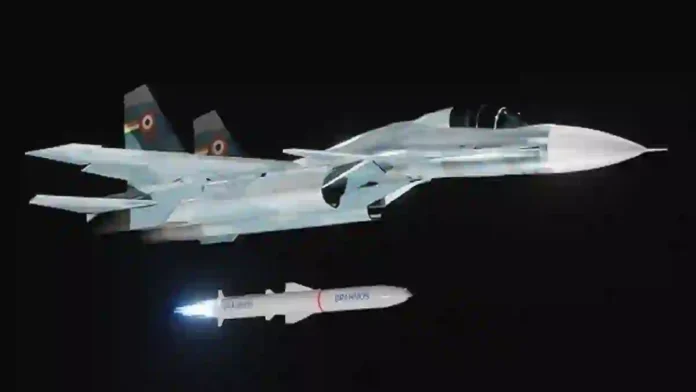The Russian-origin Sukhoi Su-30 fighter aircraft has undergone nearly 100 modifications at Hindustan Aeronautics Limited (HAL), with the integration of the BrahMos supersonic cruise missile standing out as one of the most significant and cutting-edge achievements, HAL CEO Saket Chaturvedi said in Nagpur on Monday. He highlighted that this extensive upgrade process was made possible due to India’s acquisition of Transfer of Technology (ToT) rights from Russia, which has allowed HAL to manufacture the aircraft from raw materials and tailor systems to Indian requirements.
Speaking at a book launch at the National Academy of Defence Production (NADP), Chaturvedi noted that these modifications have steadily enhanced the Su-30’s operational effectiveness, while collaborations with other defence PSUs such as Yantra India Limited (YIL) in Nagpur and Mishra Dhatu Nigam in Hyderabad are ensuring supply of critical components, including metal structures and advanced alloys.
He revealed that a major thrust is underway to indigenise the Su-30’s avionics suite within the next four to five years, which could make up to three-fourths of the aircraft indigenised, reducing dependence on imported electronic systems such as weather radars, GPS modules, flight management systems, and combat avionics.
Currently, Russia retains control over key systems like mission computers, laser guidance modules, optical displays, and navigation equipment, since these are supplied as sealed units without full technology disclosure, limiting India’s ability to upgrade them in-house.
Chaturvedi also confirmed that the Indian Air Force would formally bid farewell to its ageing MiG-21 fleet at a ceremonial function on September 26, while MiG-29s will remain in service.
The book released on the occasion, authored by two HAL officers, documents the challenges HAL has faced in navigating Russian control of critical avionics as well as the innovations developed indigenously to expand aircraft capability, with the BrahMos weaponization program representing one of the most prominent successes in adapting the Su-30 platform for Indian operational needs.
Read- India Targets 200-Plus Warships, Submarines By 2035 To Counter Pak-China Naval Threats
Detailed timeline table on the modernisation of the Sukhoi Su-30MKI in India, including major milestones like license production, avionics upgrades, and BrahMos integration:
| Year/Period | Event/Development | Details |
|---|---|---|
| 2002 | First Russian-made Su-30MKI inducted | Initial induction of Su-30MKI into Indian Air Force |
| Early 2000s | License production begins at HAL Nashik | HAL starts manufacturing Su-30MKI under Transfer of Technology from Russia |
| 2010 | Russia wins contract for Su-30 upgrades | Contract to upgrade 40 Su-30MKIs with new radars, computers, electronic warfare, BrahMos integration |
| 2016 | First test flight of Su-30MKI with BrahMos | HAL conducts the first test flight of Su-30MKI fitted with BrahMos supersonic cruise missile |
| 2017 | First air launch of BrahMos from Su-30MKI | Successful first air launch of BrahMos from Su-30MKI |
| 2023 | Super Sukhoi upgrade program approved | Govt approval for a ₹66,829 crore program to deeply modernize 84 Su-30MKIs |
| 2024 | Super Sukhoi project announced | Launch of indigenous upgrades including Indian AESA radars (Virupaaksha), mission computers, EW suites |
| 2025 (Ongoing) | Design & Development of Super-30 upgrades | 5-year phase to develop and integrate Indian avionics and systems into the Su-30 |
| 2027 (Expected) | First delivery of new/upgraded Su-30 jets | HAL expected to start delivery of upgraded jets post development |
| Mid-2030s (Expected) | Completion of retrofit/upgrades of Su-30 fleet | Phased upgrade of 84 Su-30MKIs to Super-30 standard with ~78% indigenous components |
| Beyond 2055 | Su-30MKI remains in service | Extended service life enabled by ongoing modernization |
Based On TOI Report
Agency




